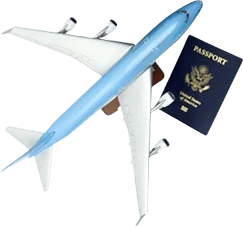
Study in Australia

- Study in Australia
- Why Study in Australia?
- Structure of Education System
- VET
- Higher Education in Australia
- Intakes
- Tuition Fees and Scholarships
-
Life as an International
Student and Cost of Living -
Work Rights for
International Students in Australia - Post-Study Work (PSW)
- Application & Admission Process
-
Requirements for Student Visa
(Subclass 500)
Study in Australia
Australia is renowned for its excellent education system, vibrant multicultural environment, and high standard of living. With world-class universities, state-of-the-art research facilities, and a diverse range of courses, studying in Australia can be an enriching experience for students from all over the globe. Whether you're interested in pursuing undergraduate, postgraduate, or research studies, Australia offers numerous opportunities for academic and personal growth. In this guide, we'll explore everything you need to know about studying in Australia, from the benefits of choosing Australia as your study destination to the application process, visa requirements, and life as an international student.
Why Study in Australia?
Australia is home to some of the world's top-ranking universities, consistently excelling in global rankings. Institutions such as The Australian National University, The University of Melbourne, The University of Sydney, and others are highly respected worldwide for their academic excellence and research contributions.
Moreover, Australia's education system is known for its innovative teaching methods, cutting-edge research facilities, and industry-relevant curriculum. Students have the opportunity to gain practical skills and hands-on experience through internships, work placements, and industry projects, enhancing their employability upon graduation.
Another compelling reason to study in Australia is its multicultural society. With people from diverse cultural backgrounds coexisting harmoniously, international students feel welcomed and supported in Australia. This multicultural environment fosters cross-cultural understanding, enriching the overall learning experience.
Furthermore, Australia's quality of life is among the best globally, with its excellent healthcare system, safe cities, and abundant recreational opportunities. From stunning natural landscapes to bustling urban centers, Australia offers a diverse range of experiences for students to explore and enjoy.
Structure of Education System in Australia
The Australian education system is divided into several levels:
1. Primary and Secondary Education: Compulsory education in Australia typically starts at age five or six and continues until the age of 16 or 17. Primary education spans from Kindergarten to Year 6, while secondary education covers Year 7 to Year 12.
2. Vocational Education and Training (VET): VET provides practical skills and training for various trades and occupations. It includes courses such as certificates, diplomas, and apprenticeships, preparing students for specific industries.
3. Higher Education: Higher education in Australia encompasses undergraduate and postgraduate studies offered by universities and other higher education institutions. Degrees range from bachelor's to doctoral levels, with opportunities for research and specialization.
4. English Language Courses: Australia is a popular destination for English language study programs, offering courses for students seeking to improve their English proficiency for academic or professional purposes.
Vocational Education and Training (VET) in Australia
Vocational Education and Training (VET) in Australia plays a critical role in equipping individuals with the skills and knowledge required for specific trades, occupations, and professions. It is a key component of Australia’s education system, designed to deliver workplace-specific skills and knowledge. VET is provided by various institutions, including Technical and Further Education (TAFE) institutes, private providers, and some universities. The sector caters to a broad range of industries, from traditional trades like plumbing and carpentry to fields such as IT, healthcare, business, and hospitality.
Key Features of VET in Australia
VET Providers
- TAFE Institutes: These are publicly funded and provide a wide range of vocational qualifications.
- Private Training Providers: Numerous private organizations offer VET qualifications. While they offer flexibility and specialization in certain fields, it's important to check their accreditation and the national recognition of their courses.
- Enterprise Training Providers: Some large companies have their own training departments accredited to deliver qualifications to their employees.
- Community Education Providers: These are smaller, often not-for-profit organizations that provide VET in community settings.
Challenges and Opportunities
- Quality Assurance: Maintaining high-quality standards across diverse and numerous training providers is a continuous challenge. The Australian Skills Quality Authority (ASQA) regulates the sector to ensure compliance with national standards.
- Changing Skill Needs: The VET sector must constantly adapt to changing industry needs, especially with technological advancements and shifts in the labor market.
- Access and Equity: Ensuring all Australians have access to VET, regardless of their background or location, remains a priority. This includes supporting rural and remote learners, people with disabilities, and Indigenous Australians.
Future Directions
The VET sector in Australia is undergoing continuous review and reform to better align with the evolving needs of the economy, industry, and learners. This includes improving the quality of training, strengthening pathways to employment, and ensuring the sector is responsive to future skills needs. Collaboration between governments, industry, and education providers is key to these efforts. VET in Australia offers a vital pathway for individuals seeking practical, career-oriented education and training, playing an essential role in the broader educational and economic landscape.
Higher Education in Australia
Higher education in Australia offers a comprehensive and diverse range of options for both local and international students, covering undergraduate and postgraduate levels. Australia is recognized for its high-quality education system, innovative teaching methodologies, and world-class research facilities, making it one of the leading destinations for higher education globally.
Undergraduate Education
Undergraduate programs in Australia typically lead to a Bachelor's degree. These programs usually take three to four years to complete, depending on the field of study and the university. Some areas, like engineering, law, and medicine, may require a longer period of study due to the nature of the qualifications. Australian universities offer a wide array of courses ranging from the Arts, Sciences, Business, Engineering, to Health Sciences and more.
There are also "double degree" programs, which allow students to study two degrees simultaneously, extending the study period by a year or two but offering graduates a competitive edge in the job market.
Postgraduate Education
Postgraduate education in Australia is designed for students who have already completed an undergraduate degree and are looking to further their knowledge in a specific field, change career paths, or pursue academic or research careers. Australia is home to some of the world's leading universities, offering a wide range of postgraduate courses in various fields, including but not limited to business, engineering, healthcare, IT, and environmental sciences. Postgraduate qualifications include:
Graduate Certificates and Graduate Diplomas: Shorter courses that can be completed in half a year to a year, offering specialized knowledge and skills in a particular field.
Master’s Degrees: Typically require one to two years of study. They can be coursework-based, research-based, or a combination of both. Master's degrees provide deeper expertise in a subject area and can significantly enhance career prospects and earning potential.
Doctoral Degrees (Ph.D.): The highest level of academic degree, requiring three to four years of research work. Candidates must produce a substantial thesis that offers a significant new contribution to knowledge in their field.
Quality and Rankings
Australian universities consistently rank highly in global university rankings, reflecting the quality of education, research output, and employability of graduates. The Australian government regulates the education sector through the Tertiary Education Quality and Standards Agency (TEQSA), ensuring high standards across all institutions.
With its diverse range of high-quality courses, world-renowned institutions, and vibrant student life, Australia offers a compelling destination for higher education at both undergraduate and postgraduate levels. Whether seeking to expand professional skills, engage in cutting-edge research, or explore new intellectual horizons, students in Australia can find programs tailored to meet their goals and aspirations.
Academic Year Start (Intakes)
Intakes for international students in Australia generally follow the academic calendar of Australian universities and educational institutions. The main intakes are typically:
Semester 1: This intake usually begins in late February or early March and extends through to June. It's the primary intake for most undergraduate and postgraduate coursework programs.
Semester 2: This intake typically starts in late July or early August and runs through to November. Not all institutions offer a Semester 2 intake for all programs, so it's essential to check with the specific institution and program.
Some institutions may also offer additional intakes such as:
Trimesters: Some universities have a trimester system with three study periods per academic year. Trimesters may start in February, July, and November, providing more flexibility for students.
Quarterly or rolling intakes: Certain institutions may have multiple intakes throughout the year, allowing students to commence their studies at various points.
It's crucial for international students to check the academic calendar and intake dates of their desired institutions and programs well in advance. Additionally, students should consider factors such as visa processing times, accommodation arrangements, and any prerequisite courses or assessments required for admission.
Tuition Fees and Scholarships
Tuition fees in Australia vary depending on the level of study (undergraduate or postgraduate), the institution, and the field of study. Additionally, tuition fees for international students are generally higher than those for domestic students.
Undergraduate Programs: Tuition fees for undergraduate programs at Australian colleges and universities universities for international students typically range from approximately AUD $10,000 to AUD $45,000 per year. Certain fields such as medicine, engineering, and business may have higher tuition fees compared to other disciplines.
Postgraduate Programs: Postgraduate tuition fees for international students in Australia can range from around AUD $15,000 to AUD $50,000 or more per year.
English Language Courses: Tuition fees for English language courses in Australia vary depending on the duration and type of course. Short-term courses may cost a few hundred to a few thousand dollars, while longer-term courses can range from around AUD $3,000 to AUD $15,000 or more per term.
Vocational Education and Training (VET) Courses: Tuition fees for VET courses, which include certificates, diplomas, and advanced diplomas, can vary depending on the qualification level and field of study. Generally, tuition fees for VET courses for international students range from approximately AUD $5,000 to AUD $20,000 per year.
It's important to note that these figures are approximate and can vary between institutions and courses. Additionally, students should also consider other costs such as living expenses, health insurance, and textbooks when budgeting for their studies in Australia.
To alleviate the financial burden, many Australian universities offer scholarships, grants, and bursaries to international students based on academic merit, financial need, or specific criteria. These scholarships can help cover tuition fees, living expenses, and other study-related costs.
Here's an overview of the types of scholarships available in Australia:
Government Scholarships:
Australia Awards Scholarships (AAS): Aimed at students from developing countries, particularly those in the Indo-Pacific region, to undertake full-time undergraduate or postgraduate study at participating Australian universities.Research Training Program (RTP): Supports both domestic and international students undertaking Research Doctorate and Research Master’s degrees with tuition fees offset and stipends.
2. University Scholarships: Many Australian universities offer scholarships for international and domestic students at both undergraduate and postgraduate levels. These can cover tuition fees, living expenses, or both and may be awarded based on academic merit, research potential, or other criteria like community service or leadership.
3. External Scholarships: Offered by organizations, companies, and charities, these scholarships have a wide range of criteria and purposes, from promoting diversity to supporting students in specific disciplines.
4. Destination Australia: An initiative by the Australian government to support both Australian and international students studying in regional Australia. It aims to promote quality education in regional areas and is available to students undertaking full-time study at participating institutions.
It's advisable for prospective international students to research the specific tuition fees for their intended program and institution and to factor in any potential scholarship opportunities or financial aid that may be available to them.
Life as an International Student and Cost of Living
Living and studying in Australia offer a unique blend of academic rigor and cultural experiences. As an international student, you'll have the opportunity to meet people from diverse backgrounds, participate in multicultural events, and explore Australia's rich cultural heritage.
University campuses in Australia are vibrant hubs of student life, offering various clubs, societies, and extracurricular activities to engage in. Whether you're interested in sports, arts, community service, or academic pursuits, there's something for everyone to enjoy.
Furthermore, Australia's natural beauty provides ample opportunities for outdoor adventures and exploration. From pristine beaches to lush national parks, students can experience the breathtaking landscapes and unique wildlife that Australia has to offer.
While studying abroad can be exciting, it's essential to prioritize your well-being and seek support when needed. Most universities offer counseling services, academic support programs, and health services to assist student s in adjusting to university life and overcoming challenges.
Cost of Living:
The cost of living in Australia can vary significantly depending on factors such as location, lifestyle, and individual circumstances. Generally, major cities like Sydney, Melbourne, and Brisbane tend to have higher living expenses compared to regional areas. Here's a breakdown of some typical expenses:
Housing: Renting or buying a home is often the largest expense. In major cities, rent for a one-bedroom apartment can range from AUD $300 to $600 per week, while buying property can be quite expensive, with median house prices in cities often exceeding AUD $1 million.
Food: Groceries costs can vary, but a typical weekly grocery bill for a single person might range from AUD $80 to $150. Dining out can be costly, with a meal at a mid-range restaurant costing around AUD $20 to $50 per person.
Transportation: Public transport is widely available in cities and can cost around AUD $4 to $7 per trip. Monthly transportation passes are available for regular commuters. Owning a car includes expenses like fuel, insurance, registration, and maintenance.
Utilities: This includes electricity, gas, water, and internet. Utilities for a one-bedroom apartment might cost around AUD $150 to $250 per month, depending on usage and location.
Healthcare: Australia has a public healthcare system (Medicare), but some expenses may not be covered, so many people also opt for private health insurance, which can cost anywhere from AUD $100 to $300 per month, depending on coverage.
Entertainment and Leisure: Costs for entertainment such as movies, concerts, and gym memberships vary but can add up. However, Australia also offers many free recreational activities, such as visiting parks and beaches.
Miscellaneous: Other expenses might include clothing, personal care items, and unforeseen costs.
It's essential to research and budget according to your specific circumstances, keeping in mind that costs can fluctuate over time and may differ depending on where you live in Australia. Additionally, exchange rates can impact the cost of living for international visitors or expatriates.
Work Rights for International Students in Australia
International students studying in Australia have certain rights related to their employment while they are in the country. Here are some key points regarding work rights for international students in Australia:
Visa Restrictions: The work rights of international students in Australia are determined by the type of visa they hold. Most international students in Australia hold a student visa (subclass 500), which typically allows them to work up to 40 hours per fortnight (two-week period) during the academic session and unlimited hours during scheduled course breaks.
Work Limitations: International students are generally not allowed to work until their course has commenced. They are also prohibited from undertaking work before they have commenced their studies in Australia.
Minimum Wage: International students have the right to receive at least the minimum wage for any work they undertake in Australia. As of my last update, the minimum wage in Australia was determined by the Fair Work Commission and reviewed annually.
Taxation: International students are subject to taxation laws in Australia. They are required to obtain a Tax File Number (TFN) from the Australian Taxation Office (ATO) if they are employed in Australia. However, they may be eligible for tax concessions or refunds depending on their circumstances.
Work Conditions: International students are entitled to the same work conditions as Australian workers, including fair pay, safe working conditions, and entitlements such as sick leave and annual leave.
Employment Opportunities: International students can seek employment in various sectors such as retail, hospitality, administration, and tutoring, among others. However, some industries may have specific requirements or restrictions regarding international student employment.
Work Experience: International students can also undertake internships or work placements related to their field of study as part of their course requirements. These opportunities can provide valuable work experience and enhance their employability upon graduation.
Work Rights Monitoring: The Australian government monitors compliance with work rights regulations, and employers found to be exploiting international students may face penalties. International students are encouraged to report any instances of exploitation or unfair treatment to the relevant authorities.
Post-Study Work (PSW)
After completing your studies in Australia, you may be eligible to apply for a Post-Study Work (PSW) visa, which allows you to stay and work in Australia temporarily. The availability and requirements for the PSW visa depend on various factors such as the type and duration of your study, the level of qualification obtained, and changes in immigration policies. Here's a general overview of the PSW visa program in Australia:
Temporary Graduate Visa (Subclass 485): This visa allows international students who have recently graduated from an Australian educational institution to work and stay in Australia temporarily. There are two streams under this visa:
Graduate Work Stream: For graduates with skills and qualifications closely related to occupations on the Skilled Occupation List (SOL). This visa is valid for up to 18 months.
Post-Study Work Stream: For graduates with a higher education degree from an Australian institution. The duration of this visa depends on the level of study completed:
Bachelor's degree: 2 years
Master's by coursework degree: 2 years
Master's by research degree: 3 years
Doctoral degree: 4 years
Eligibility Criteria: To be eligible for the Temporary Graduate visa, you must meet certain requirements including:
Completion of a qualification from an Australian educational institution within the last six months.
Meet health and character requirements.
Have adequate health insurance.
Have sufficient funds to support yourself during your stay.
Application Process: You can apply for the Temporary Graduate visa online through the Department of Home Affairs website. The application process typically involves providing evidence of your qualifications, English language proficiency, health insurance, and financial capacity.
Work Rights: The Temporary Graduate visa allows you to work full-time, part-time, or casual during your stay in Australia. There are no restrictions on the type of work you can undertake.
Pathways to Permanent Residency: The Temporary Graduate visa can also serve as a pathway to permanent residency in Australia. If you meet certain criteria, such as gaining relevant work experience and meeting the points requirement for skilled migration, you may be eligible to apply for permanent residency through skilled migration pathways.
It's essential to check the latest information on visa requirements and eligibility criteria from the Department of Home Affairs.
Application & Admission Process
The process of applying to Australian universities varies depending on the institution and the level of study. However, some general steps apply to most applications:
Research: Begin by researching universities and courses that align with your academic interests and career goals. Consider factors such as program reputation, course structure, location, and tuition fees.
Check Entry Requirements: Each course and university may have specific entry requirements, including academic qualifications, English language proficiency tests (such as IELTS or TOEFL), and relevant work experience.
Submit Application: Once you've selected your preferred universities and courses, complete the application process online through the institution's website or the central application system, such as the Universities Admissions Centre (UAC) or the Victorian Tertiary Admissions Centre (VTAC).
Provide Supporting Documents: Prepare and submit supporting documents, including academic transcripts, letters of recommendation, a personal statement, and proof of English proficiency.
Wait for Offer: After submitting your application, wait for the university to assess your eligibility. If successful, you will receive an offer letter outlining the conditions of your admission.
Accept Offer and Visa Application: Upon receiving an offer, accept it as per the instructions provided by the university. International students will also need to apply for a student visa (subclass 500) through the Department of Home Affairs.
Arrival and Enrollment: Once your visa is approved, make travel arrangements to Australia. Attend orientation programs offered by the university and complete the enrollment process to officially start your studies.
Requirement for Student Visa (Subclass 500)
International students planning to study in Australia must obtain a student visa (subclass 500) before commencing their studies. To apply for a student visa, applicants must meet the following requirements:
Confirmation of Enrollment (COE): Obtain a valid Confirmation of Enrollment (COE) from a registered Australian institution for the intended course of study.
Genuine Student (GS) Requirement: The Australian Government has replaced the Genuine Temporary Entrant (GTE) requirement for student visas with a Genuine Student (GS) requirement. This is effective for student visa applications lodged on and after 23 March 2024. The GS requirement, by the name, suggests a shift towards assessing the genuineness of the student’s intention to undertake their studies. This could involve scrutinizing the student's academic background, the relevance of the chosen course to their future career plans, evidence of their commitment to their studies, and perhaps how plausible their study plan is within the context of their academic and professional goals.
Financial Capacity: Demonstrate sufficient funds to cover tuition fees, living expenses, and travel costs for the duration of the course.
Health Insurance: Purchase Overseas Student Health Cover (OSHC) to cover medical and hospital expenses while studying in Australia.
English Proficiency: Meet the English language proficiency requirements specified by the institution or provide evidence of exemption.
Character and Health Requirements: Provide police clearance certificates from all countries resided in for more than 12 months in the last ten years and undergo a medical examination to meet health requirements.
Biometric Information: Some applicants may need to provide biometric information (fingerprints and facial photographs) as part of the visa application process.
It's essential to check the specific visa requirements and application process on the Department of Home Affairs website.
Start Your Journey Today!


Embark on your educational journey in Australia, a land of opportunity and innovation! With world-renowned universities, vibrant campuses, and a multicultural environment, Australia offers a transformative learning experience. From bustling cities to breathtaking natural landscapes, Australia provides a rich backdrop for personal and academic growth. Explore diverse fields of study, immerse yourself in a dynamic culture, and build connections that last a lifetime. Start your journey today and unlock endless possibilities for success.




